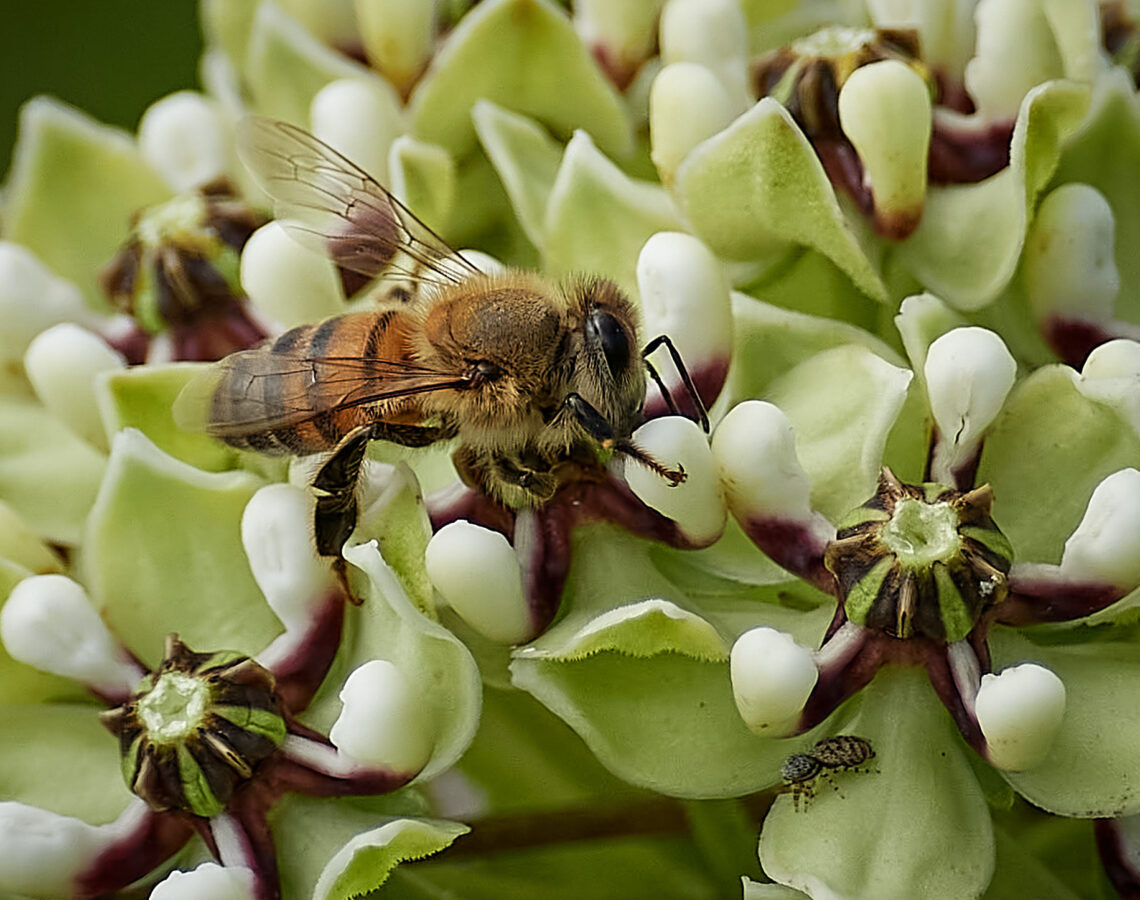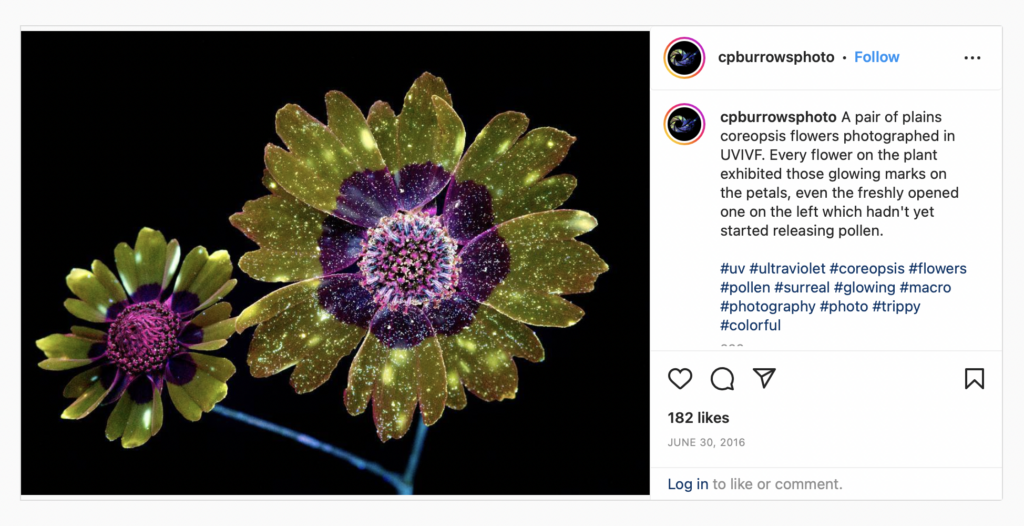The Secret Language of Flowers

I’ve done some unusual/cool/crazy things in my life. I’ve visited all 7 continents. I’ve flown over Afghanistan in a Black Hawk helicopter. I’ve met with Ministry Level officials in Pakistan. I’ve visited Antartica to view penguin colonies.
But honestly, some of the craziest stuff I’ve been privy to can be found right in all of our own backyards. You just have to know where to look. Today I want to share a few of the nuttiest ways that flowers and bees interact in nature, literally right under all of our noses!
Honey bees can see UV light!
Honey bees can see every color that humans can see except for red: the color red appears as a dark grey in the eyes of a honey bee. But honey bees have another special super power: they can see ultraviolet light! Ultraviolet light is a type of electromagnetic radiation that makes those black-light posters from the 90s glow! Plants fluoresce, which means they absorb ultraviolet light and produce colors and patters not visible to the human eye. But because of the honey bee’s super power, they CAN see these hidden patterns and colors, which can help entice and guide the bee to find the nectar and pollen in a plant.
Craig Burrows is a botanical photographer that specializes in taking photos of flowers under UV lights so that we humans can see all the hidden messages! (Definitely check out his Instagram here)
An example of his work is below. This is how a coreopsis flower appears to bees. All that glowing stardust!? That is pollen! In addition to electric glowing pollen, other flowers have “invisble” stripes running into the middle of their flowers, almost like landing strips guiding the bees where to land.

It’s Electric!
In addition to their super vision, bees also use electric currents to find flowers as well!
Plants and flowers have a negative charge, whereas bees have a positive charge from flying through the air. In fact, scientists have found that the charge is so strong that pollen can start to leap from the flower to the bee before the bee even lands on a flower!
After a bee visits a flower, it changes the charge of the flower for a few minutes, which may signal to other bees that the flower has already been visited. In a study performed in 2013, scientists found that bumble bees use these electromagnetic fields to find flowers to visit.
Bluebonnets: A chameleon flower?!
Bluebonnets are the prized state flower in Texas, so much that any Texan will tell you it’s actually illegal to pick them in the state of Texas. (Hard truths–its actually NOT, but this is a fable that started many generations ago and keeps getting passed down. I’m ok with us keeping up the lie though!)
Have you ever noticed that the mini flowers (florets) that make up the bluebonnet are white in the center towards the top of the plant, and a dark purple towards the bottom of the plant? As the plant grows, the older florets change color as they age, whereas the younger florets open up with white centers.
Why? Bees are very attracted to the bright white spots on the florets, and bluebonnets contain a great deal of highly nutritional pollen. However, as the florets age, the pollen becomes less abundant and less fertile. This adaptation directs the bee to visit the top of the flower to find the youngest pollen, as opposed to the bottom of the flower. This benefits the bee as it may save energy as they don’t waste time checking the purple florets for pollen that has already been gathered. And this benefits the plant as it ensures the most fertile pollen is used to pollinate the flower, and therefore produce lots of quality seeds to allow the flower to reproduce.
I’m always learning and want to know: what is the craziest fact you know about some form of nature?! Comment below and tell me about it.
Cover photo by and used with permission from Troy Carter.



Leave a Reply